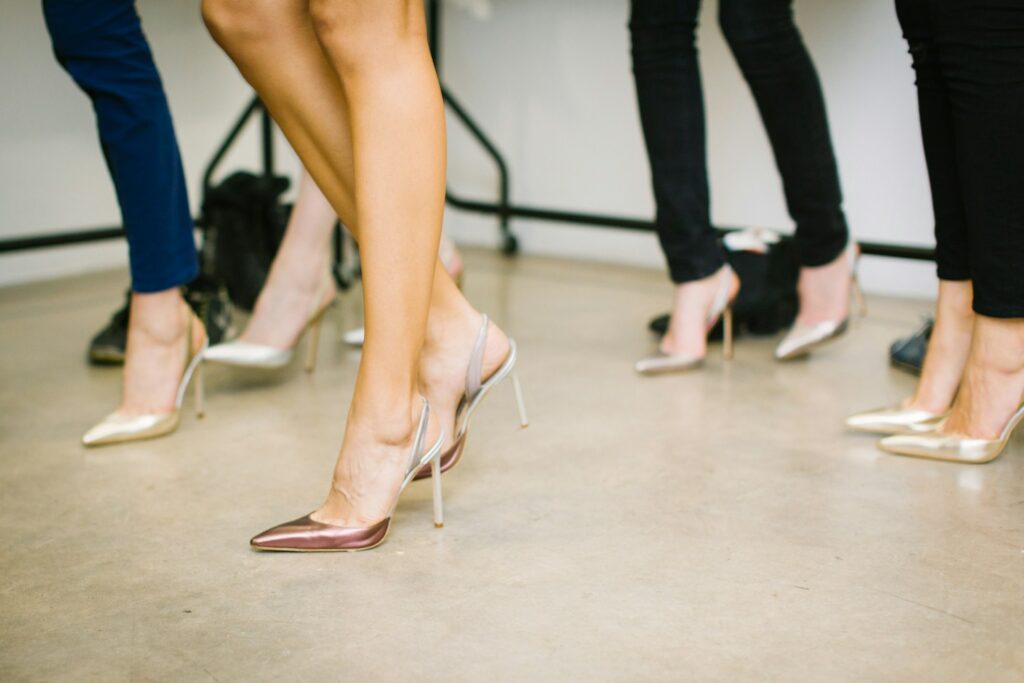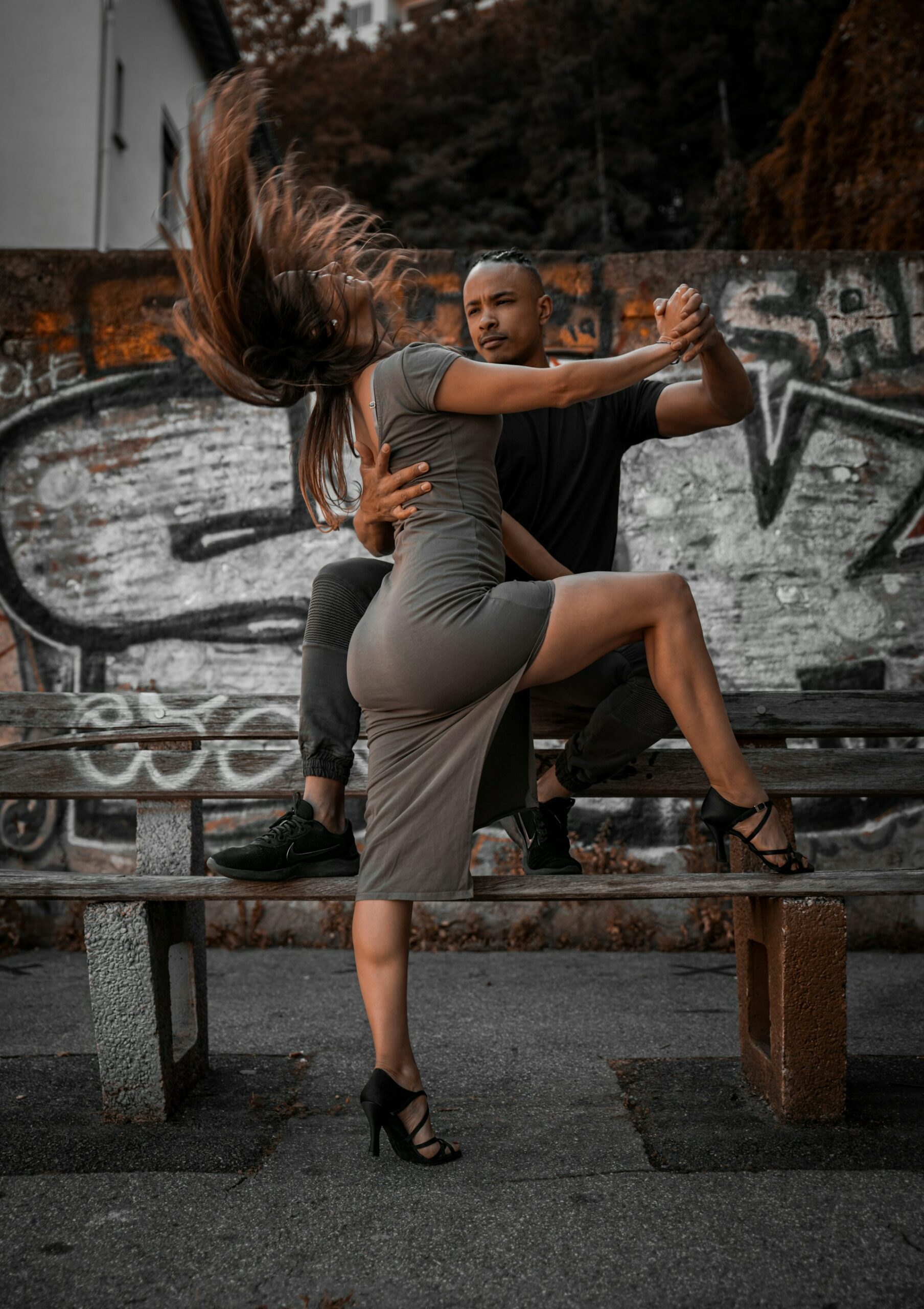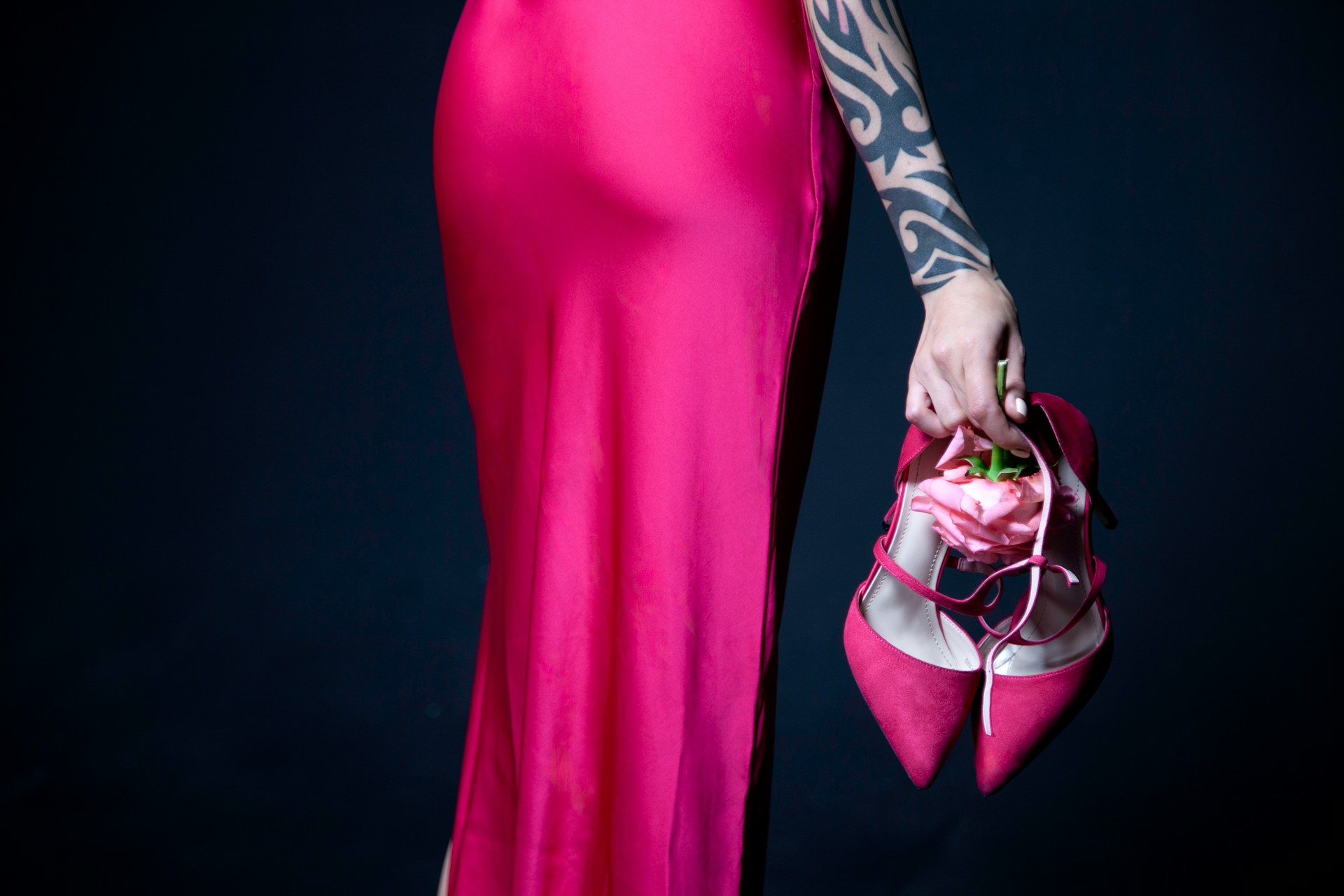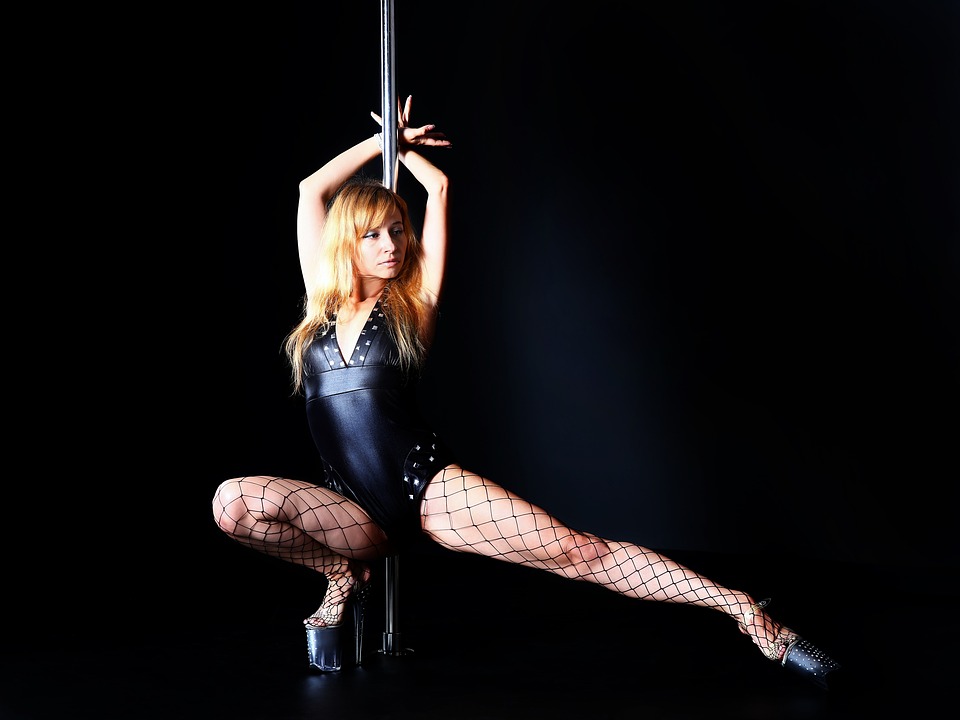
Summary
Heel dancing: everything you need to know to take the plunge!
Mixed heel dancing elegance And power, an art that attracts those seeking to express their style and confidence. This practice, combining technical And grace, requires understanding and dedication. From solid bases to varied styles, it offers a unique field of expression.
Summary
Introduction to heel dancing
Mastering heel dancing requires more than keeping up with the rhythm; it is a quest for balance, strength and fluidity. Mistakes to avoid, benefits to embrace, every detail counts to transform the experience.
Definition and origins
You've probably heard of dancing in heels, perhaps even seen flashes of grace and power in video clips or during shows. But what exactly is it? And where does this practice come from which combines elegance And pace ?
Heel dancing is the captivating art of dancing, you guessed it, on heels. Far from being a modern invention, this practice has its roots in a rich history, evolving over the decades to become a global cultural phenomenon. She mixes technical, body language and a hint ofaudacity, turning wearing heels into an art form in its own right.
Historically, heel dancing has its origins in various cultures and eras, where it was used to express femininity, there strength, and sometimes even the social status. From the court of Louis XIV, known for his high heels and his passion for dancing, to the cabarets of the 20th century, heel dancing has survived the centuries, constantly reinventing itself. Today, it is largely inspired by the pop culture, from music videos with choreographer Yanis Marshall, to fashion shows, where performances in high heels capture the collective imagination.
It is a discipline which, beyond its aesthetic dimension, requires impressive technical mastery. Balance, grace, strength And expression are the pillars on which heel dancing rests, making it both a demanding and extremely rewarding practice.
So, are you ready to dive into the fascinating world of heel dancing? Accompany us on this journey through its styles, its benefits, and the tips to master its secrets. Whether you are a novice or an enlightened amateur, this article will guide you step by step (in heels, of course) into the captivating world of this unique artistic practice.
The Basics of Heel Dancing
Before hitting the track, a few basics are essential. It's an art that starts with choosing heels and outfit. So, how do you choose the right dancing companions and equip yourself properly? We will see !
Choosing the Right Heels
The heel is a bit like your dance partner: it must be reliable, comfortable and attentive to you. Here are some criteria to avoid making a mistake:
Height : We forget the Eiffel Towers at our feet! Opt for a comfortable height, one that allows you to remain stable without playing a balancing act. In general, a heel of 5 to 7 cm does the trick.
Shape : Square or slightly flared heels provide better stability. They are your best allies to avoid missteps.
Holding system: Shoes with straps or laces wrap the foot better and reduce the risk of slipping or twisting your ankle.
Proper equipment and attire
Now that the feet are ready, let's talk outfit. The master word ? Comfort. Forget restrictive skirts or too-tight tops. Heel dancing is about self-expression, so you have to be able to move freely!
Clothes : Choose clothing that follows the movement of the body without constraining it. Soft leggings and a fitted top, for example, allow your movements to be clearly seen without hindrance.
Accessories : The fewer the better. We avoid anything that can get caught, fall, or hinder movements. A hair band or a chic little bracelet, and off you go!
And the essential accessories? Don't forget a bottle of water, because yes, you will sweat. And why not a small notebook to note your progress or the movements to work on? After all, dance is also a matter of memory.
In summary, whether you're choosing your heels or your outfit, remember that heel dancing is a celebration of strength and inner beauty. Anything that helps you feel good, stable, and free in your movements is the right choice. Ready to shine on the track?

The different styles of heel dance
Now let's dive into the heart of the matter: heel dance styles. There are several, each with its own personality, movements, and history. Enough to find the right shoe for you!
Heels Dance
Heels Dance, this fascinating discipline, stands out for its energy, her modernity, and its close link with the pop culture. But before we dive into its moves, let's take a quick detour into the differences with Cabaret, another iconic style of heel dancing.
THE Cabaret, with its roots deep in the history of dance and theater, often evokes images of burlesque shows, of musical numbers bright, and extravagant costumes. It celebrates the art of seduction through performances that combine singing, dance, And comedy, all with a touch of retro glamour.
The Heels Dance is part of a dance dynamic contemporary. Directly inspired by music videos and live performances from pop stars, it focuses on empowerment, there self-confidence, And personal expression. If Cabaret plays on theatricality, Heels Dance celebrates strength and independence through a more direct, energetic and sometimes even athletic dance. It is also possible in oriental dance and ballroom dance.
How to dance the Heels Dance?
To conquer the Heels Dance floor, some tips:
Warming up : Always start with a good warm-up. Heels place different demands on your muscles and joints. Stretch well to avoid injury.
Posture and Balance: The key is strong posture. Keep your back straight, your abs engaged, and remember to distribute your weight throughout your entire foot, not just your heels. This helps maintain balance.
Walking in Heels: Before launching into complex choreographies, master walking in heels. Start slowly, placing the heel first then the toe, keeping the movement fluid.
Supports: Work on the different supports (on the heels, on the tips of the toes, on the sides) to vary your movements and give dynamics to your dance.
Basic Movements: Familiarize yourself with the basic movements of Heels Dance – hip swipes, undulations, turns, and poses. Practice smooth transitions from one movement to another, while maintaining a connection with the rhythm of the music.
Body language : Heels Dance is as much about attitude as it is about technique. Dare to express your emotions, play with facial expressions, and let your personality shine through every movement.
Practice and Patience: As with any art, regular practice is essential. Be patient with yourself and celebrate every progress, big or small.
Heels Dance is an invitation to explore your strength, your sensuality, and your confidence, all on heels. It's a dance that requires courage and determination, but is incredibly rewarding. So, are you ready to put on your heels and get started?
Street Jazz and Hip Hop in heels
Let's dive into the worlds of Street or Jazz dance and Hip Hop in heels, two dynamic styles that borrow from urban culture to create vibrant choreographies full of attitude.
Street Jazz in heels
Street Jazz is a seductive blend of modern jazz and movements inspired by street dance. In heels, it gains a dimension of sophistication and elegance, while retaining its energy and expressiveness.
Steps for basic choreography:
Warm-Up with Insulation: Start by warming up each part of your body. Isolation of the shoulders, neck, hips – these movements prepare the body for precise expression.
No Base and Slips: Slide sideways, alternating one foot behind the other, in time with the music. Keep movements smooth and precise.
Twists and Pivots: Pivot on one foot, with the other leg crossing in front or behind, for a dynamic twist. Add expressive arms to accentuate the movement.
Hips and Waves: Incorporate sideways hip swivels and torso undulations to add sensuality to your choreography.
Finale with Pose: Finish with a strong pose, for example a throw of the arms accompanied by a proud look at the audience.
Hip Hop in heels
Hip Hop in heels injects a dose of power and confidence into classic dance moves. hip hop, making each step more impactful thanks to the elevation of the heels.
Steps for basic choreography:
Rhythmic Warm-Up: Start with a warming up that follows the beat. Mark the rhythm with foot strikes and hand claps.
Bounce and Groove: Bounce, the basic movement of hip hop, is gaining in intensity. Bend your knees slightly in rhythm, keeping the weight on the balls of your feet.
No Hip Hop Classics: Incorporate steps like the “Running Man” or the “Criss Cross,” adapted to be performed in heels. The emphasis is on precision and attitude.
Freestyle and Expression: Add a section where you let your creativity run wild, playing with levels, directions, and personal expression.
Final Punch: Conclude with a powerful movement, for example a jump followed by a split landing, to make a strong visual impact.
In both styles, the emphasis is on the fluidity movements, precision, And personal expression. In heels, these dances take on a new dimension, mixing elegance with the raw energy of the street. Each choreography becomes a story told through the body, where music, movement, and expression intertwine to create something unique. Whether you lean towards the sophistication of Street Jazz or the raw energy of Hip Hop, in heels you are sure to turn heads.
Fundamental Techniques of Heel Dancing
Mastering heel dancing is a bit like learning a new language. There are basics to know, techniques to practice, and fluidity to achieve. Let's dive together into these fundamentals that will transform your heel dancing experience.
Walking in heels
It all starts with walking. Yes, it may seem basic, but in heels, it's quite a deal!
Starting Position: Stand straight, shoulders back, look proud. Imagine that an invisible thread is pulling you upward from the top of your head.
Balance and Body Weight: The secret ? Distribute body weight evenly across the entire foot. Remember to press as much on the heel as on the toe.
Little Steps: In heels, it is better to take small steps. This will help you maintain your balance and look more graceful.
Rhythm and fluidity: Keep a steady pace. Fluency comes with practice. Don't be afraid to slightly exaggerate the natural swing of your hips; That’s what walking in heels is!
Basic movements
The basic movements in heel dancing are the building blocks with which you will build your choreographies. Here are a few to master:
Unhinged: The hip swing is crucial. It adds sensuality and fluidity to your dancing. Practice in front of a mirror to ensure your movements are symmetrical.
Body Undulations: Starting at your head, let the wave flow down your body to your feet. These movements require flexibility and good control of each part of the body.
Pivots and Towers: The towers add an interesting dynamic. The key ? Keep your gaze fixed so as not to lose your balance. Practice first without heels, then with them.
Poses: Each movement can end with a strong pose, which marks a moment and gives intensity to your dance. Play with the levels, the angles of your body, and the expression of your face.
Use of Space: Heel dancing is not limited to one spot. Use the space around you, move with confidence and intention.
Tips for developing musicality and rhythm
Listen to the Music: Become familiar with the rhythm and structure of the music you are dancing to. This will help you anticipate changes and adapt your movements.
Practice with Metronome: This can help develop a more precise sense of internal rhythm.
Vary the Musical Styles: Don't limit yourself to just one musical genre. Each style brings its own challenges and helps you become a more versatile dancer.
In summary, the fundamental techniques of heel dancing are your alphabet. Master them, and you can “write” incredible stories with your body. Remember: patience and practice are your best allies. So, put on those heels and dare to express all your creativity and passion through dance!
Benefits of dancing in heels
Heel dancing is not just about style or artistic expression; it also offers a multitude of benefits for the body and mind. Let's take a closer look at what this practice can do for you.
On the body
Muscle strengthening: Dance in heels, and you'll discover muscles you didn't know existed! The legs, glutes, and core work intensely to maintain balance and execute movements with precision. It's an effective way to sculpt the body, while having fun.
Improved posture: The need to maintain good balance in heels encourages better posture. The back straightens, the shoulders open, and the neck lengthens naturally. Over time, these adjustments result in improved overall posture, even off the dance floor.
Balance and coordination: Heels add an additional balance challenge, forcing the body to constantly adjust to avoid falls. This practice refines the sense of balance and improves coordination of movements.
Cardiovascular endurance: Make no mistake; Heel dancing can be a great cardio workout. Fast, energetic routines get your heart rate up, helping to improve endurance and cardiovascular fitness.
On the mind
Self-confidence : There's something powerful about knowing how to move gracefully and confidently in heels. This mastery translates into self-confidence, in and out of the dance hall. Feeling comfortable and sexy in your body is a huge boost to your self-esteem.
Personal expression: Heel dancing is a form of artistic expression that allows you to explore and manifest your emotions, thoughts, and personality. It's a safe space to experiment with self-expression, without judgment.
Letting go and enjoying: In our often stressful daily lives, heel dancing offers a joyful escape. The simple act of moving to music, concentrating on the movements, helps you forget about worries and live fully in the present moment. The pleasure found in dancing can be true therapy, calming the mind and elevating the mood.
Community and belonging: Practicing heel dancing often means being part of a community. Classes, workshops, and events are opportunities to meet people with similar interests, contributing to a sense of belonging and friendship.
In short, heel dancing is much more than a series of steps and movements performed to music. It is a comprehensive activity that nourishes the body and soul, encourages personal development, and provides a space for joy and free expression. Whether you're looking to improve your fitness, gain confidence, or simply find a creative outlet, heel dancing has a lot to offer. So why not try it?
Common mistakes and how to avoid them
Heel dancing, like any art, has its share of challenges. Recognizing and correcting these common mistakes can transform your dance practice, making it safer, enjoyable, and effective. Here's a guide to navigating common pitfalls.
Technical errors
Bad posture : To stand poorly is to invite tension and imbalance. To avoid this, focus on aligning your body. Imagine a straight line from your head to your feet, and adjust your posture to follow this line. Engage your core and keep your shoulders relaxed but back.
Inappropriate choice of heels: Wearing heels that are too high or ill-fitting can sabotage your dancing before you even start. The solution ? Invest in a pair of heels designed for dancing, providing support and comfort. Make sure they are the right size and provide sufficient stability.
Lack of fluidity: Jerky or stiff movements can spoil the elegance of the dance. To remedy this, practice isolation and flow exercises. Focus on moving smoothly from one body part to another and use transitions to smooth out your dancing.
Practice errors
Neglecting warm-up and stretching: Skipping these essential steps increases the risk of injury. The solution is simple: always allow time for a thorough warm-up and post-dance stretching. This prepares your muscles and joints for exercise and helps with recovery.
Ignoring body signals: Pushing your body beyond its limits can lead to injury. To avoid this, learn to listen to your body. If you feel pain or excessive fatigue, take a break. Regularity is more beneficial than sporadic intensity.
Lack of regularity in practice: Progression in heel dancing, as in any discipline, requires consistency. To overcome this, set a regular practice schedule. Even short, frequent sessions can lead to significant improvements.
Social isolation: Practicing alone can sometimes limit your progress and motivation. The key ? Join a dance class or group. Collective energy and peer support can boost your learning and enjoyment.
By becoming aware of common mistakes and adopting good practices, you can not only avoid pitfalls but also enrich your dance experience. Each step, each movement then becomes an opportunity to learn, to improve, and above all, to flourish. The key is balance: between listening to yourself, discipline, and openness to others. With patience and perseverance, heel dancing reveals its full potential, transforming both the dancer and their dance.
Tips for progressing in heel dancing
Mastering heel dancing is within everyone's reach, as long as one follows certain essential guidelines. Here is a series of practical tips to not only improve your technique, but also to enrich your overall dancing experience.
Training and regularity
Regular practice: The key to progress is consistency. Define a realistic training program that you can follow over the long term. Even 15 to 20 minutes a day can make a significant difference.
Variety in practice: Feel free to explore different styles of heel dancing. Each brings its own challenges and benefits, enriching your range of movements and improving your adaptability.
Register: Film your dance sessions. This will allow you to visualize your progress, identify areas for improvement, and strengthen your motivation by concretely seeing the evolution of your dance.
Constructive feedback: Seek feedback, whether from a teacher, peers, or even online forums. An outside perspective can offer valuable perspectives on your practice.
Group sessions: Participating in classes or workshops not only provides professional education but also the opportunity to share your passion with others. Collective energy can boost your motivation and learning.
Focus on the fundamentals: Don't neglect the basics of heel dancing, even as you progress. A strong technical foundation is essential for building more advanced skills.
Patience and perseverance: Progress in dance, as in any art, requires time and commitment. Be patient with yourself and celebrate every small victory along the way.
health and wellbeing
Warm-up and cool-down: Start each session with a good warm-up and end with a stretching session. This will help prevent injuries and improve your flexibility.
Hydration and nutrition: Don't underestimate the importance of good hydration and a balanced diet. Your body needs fuel and fluids to perform at its best.
Listen to your body: Give yourself days off when you feel the need. Recognizing and respecting your body's limits is crucial for a sustainable and fulfilling practice.
Mentality and motivation
Clear objectives: Set practice goals that are specific, measurable, achievable, realistic, and time-bound. This will give you a sense of direction and a way to measure your progress.
Positive mentality: Cultivate a positive attitude towards the practice. See mistakes not as failures, but as learning opportunities.
Inspiration : Surround yourself with inspiration. Whether it's through videos, shows, or books, nurturing your passion for heel dancing will help you stay motivated.
Advancing in heel dancing is an exciting journey, full of challenges and rewards. By adopting a holistic approach that encompasses technique, physical well-being, and mental health, you can not only improve your dancing, but also enrich your life. Remember, each dancer has their own pace of progression; the important thing is to stay true to yourself, enjoy the journey, and celebrate each step forward.

Conclusion
Heel dancing merges grace, strength and personal expression, providing everyone with a path to self-confidence and fulfillment. Mastering the basics and techniques requires practice and patience, but each step becomes a celebration of your own power. From wise shoe choices to regular workouts, every detail counts when dancing with ease and safety.
Avoiding common mistakes and adopting a kind approach to yourself accelerates progress, while the variety of styles enriches the experience, making each session unique and rewarding. Heel dancing is more than a physical activity; it’s a transformative adventure.
Dance freely at DECIBEL
If you are attracted by the idea of combining dance And cardio, DECIBEL® is the perfect place for dance lessons! Immerse yourself in our sessions 45 minutes which merge dance And fitness, designed specifically to boost your endurance And sculpt your silhouette.
Discover a world of energetic and varied choreography, carried by an enthusiastic collective spirit. Under the direction of our dynamic coaches, target your abs, thighs and glutes in a stimulating setting, animated by catchy music and soothing lighting.
At DECIBEL®, pleasure is essential at every moment!
Read also
follow us
on instagram
Follow our news,
take advantage of our tutorials and participate to our
contests!
BREAKING NEWS!
Receive our newsletter.






